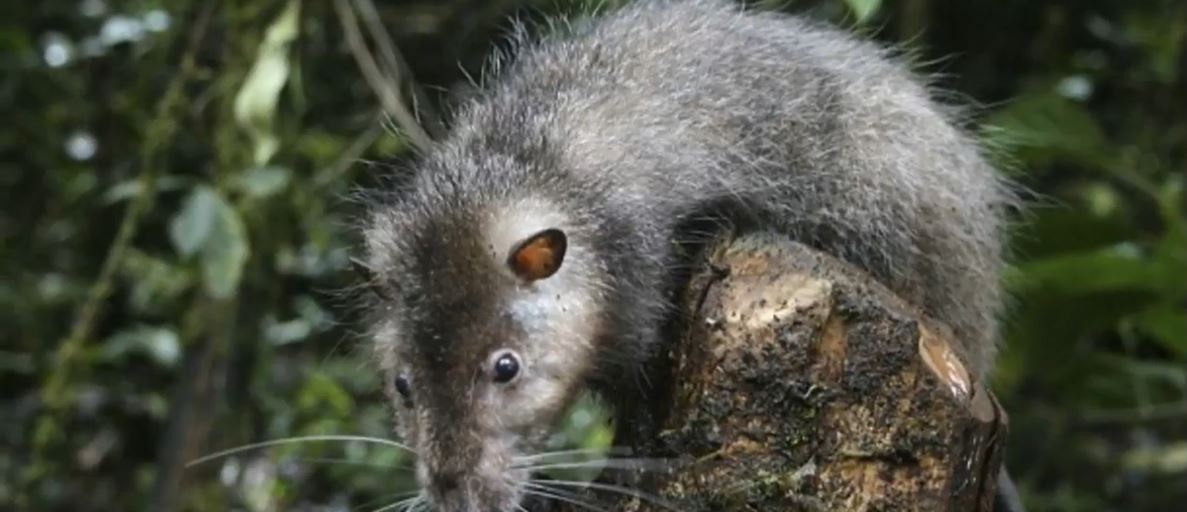About Rats: Appearance, Biology, Life Cycle, Habitat, Diet, And Behavior

Rats are one of the most interesting animals that you may find in your home because this species can be found as both a wild rat or a domesticated rat. The two types are inherently similar but while domesticated rats are confined to cages so their destruction is limited, wild rats have no such constraints and can cause significant damage in your home. Experts believe that rats began in Asia and traveled across the world with people on ships. Today, the species can be found worldwide and there are many types of rats found in the United States with the most common being the brown Norway rat and the roof or black rat.
Appearance
Rats have teeth which are exceptionally strong, which is why they are able to chew through tough materials such as lead, aluminum, wire, cinderblock, or glass. Rats do not have a jawbone that is fused in the middle, which makes it seem as if their lower incisors are slightly separated. Rats have a short body with a pointed muzzle, dexterous forepaws, and a long slender tail.
Due to their small size and body structure, it is possible for a rat to fit through any gap the size of a quarter or larger. Norway rats are typically between 7 and 10 inches long and weigh 10 to 17 ounces, making their bodies longer and larger than that of roof rats. Roof rats, on the other hand, measure 6 ½ to 8 inches and weigh 6 to 12 ounces. Norway rats tend to have a yellow-white to gray underside and reddish-brown, blackish to pure gray, or grayish-brown coat. The tail will be dark along the top and lighter on the bottom. Roof rats are typically gray or white on their underside and brownish-gray to black on top with a uniform color on their tail.
The unique tail of rats regulates their body temperature and serves for balance and communication. Since they don't have glands along the underside of their feet, they lie down on their backs in order to sweat.
Biology And Life Cycle
Rats can start reproducing at around three months of age. They tend to have between four and six litters annually, each with between 6 and 12 babies. The gestational period lasts only 21 to 23 days and the mating ritual can be completed in as little as two seconds. Rats reproduce incredibly quickly and can actually become pregnant within days of giving birth to a litter.
Baby rats will typically start growing hair at about 7 days of age and open their eyes around 12 to 14 days. They will stay with their mother until weaning when they are 3 or 4 weeks old. The vast majority of wild rats will die before reaching a year old due to predators or other causes. Rat predators include birds of prey, wildcats, and snakes.That being said, it is possible for a rat to live 18 months and in some cases they have lived to 4 or 5 years.
Habitat
Norway rats typically line their nest using shredded cloth or paper. They can be found in fields, woodpiles, farms, and buildings. When in your home, they tend to stay on the ground floor or take up residence in the basement. Roof rats, on the other hand, enjoy climbing, which is why they typically live near the top of your home, such as your attic or roof. You can also find them in thick grass, wood piles, under floors, in the ceiling, in boxes, or in your shed or garage.
Diet
When searching for food, rats rely on all of their senses, including sound, touch, taste, and smell. Rats are scavengers, meaning that they eat a varied diet that changes based on the food they find. Norway rats prefer to eat certain fruits, nuts, fish, meats, or cereal grains. Roof rats have a similar diet but prefer rotten food, snails, slugs, grain, nuts, pet food, cereal, vegetables, berries, and fruits. The scavenging nature of rats has combined with the prevalence of human garbage has led to rats increasing in size. Every day, a rat will drink about an ounce of water and eat about an ounce of food.
Behavior
Roof rats, in particular, are great climbers and capable of climbing trees in search of food or shelter. Norway rats, on the other hand, don't climb well, but can swim. They depend on taste, touch, smell, and hearing as their vision is poor and they are also color blind. The whiskers provide rats with an extended sense of touch.
When rats are happy, they will grind or chatter their teeth, which can lead to the appearance of their vibrating due to the lower jawbone applying pressure on the back of the eye. Rats are also social, preferring to live in groups and communicate via high-frequency sounds, body postures, touch, and smell.
Rats are also highly intelligent and clean. They tend to be shy, but curious, which makes it harder to catch them when they invade your home. When threatened, rats can become aggressive, boxing, biting, chasing, or fighting.
Read the How to get rid of rats page for helpful information and to learn more about About Rats: Appearance, Biology, Life Cycle, Habitat, Diet, And Behavior

